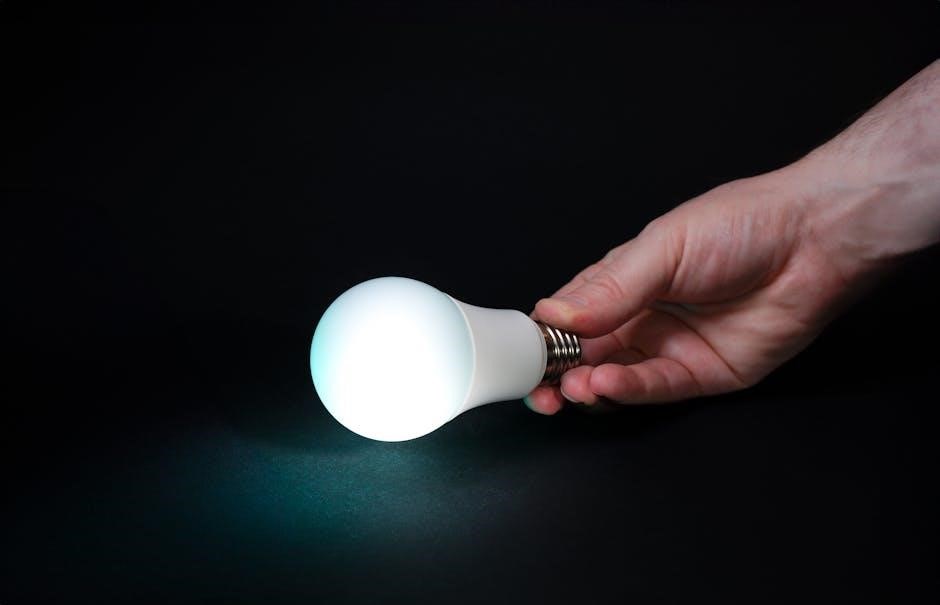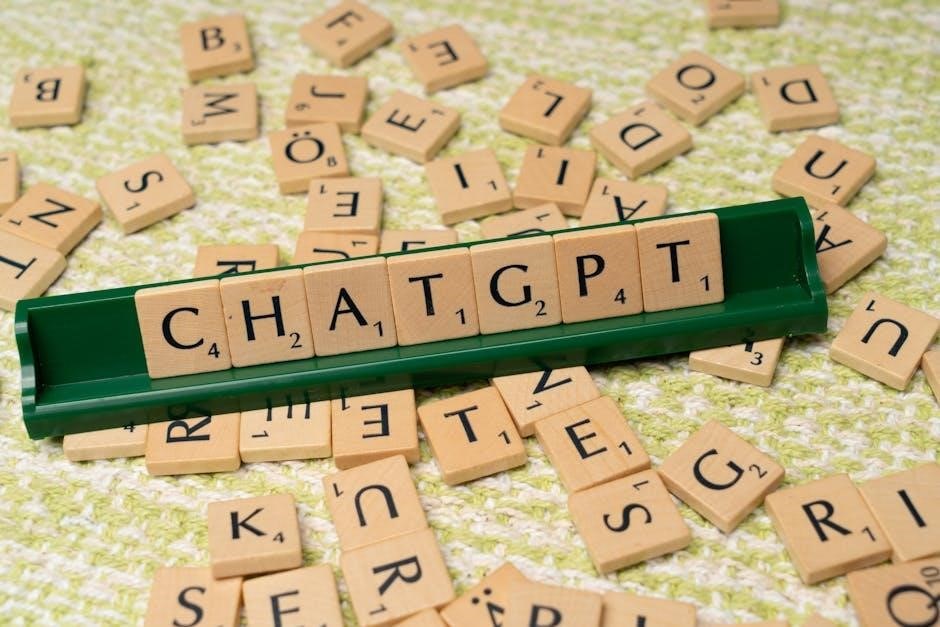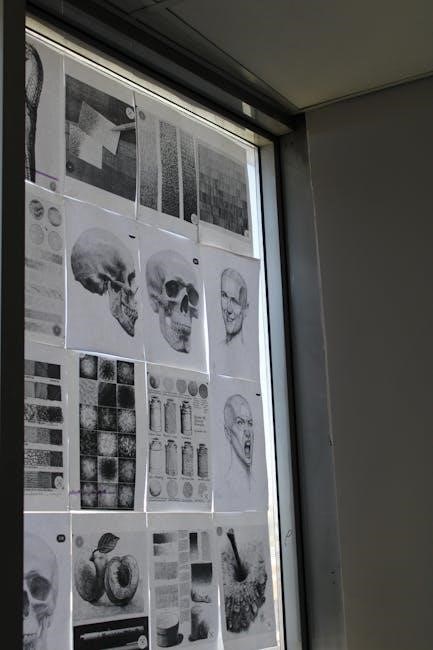
A science fair board template is a structured format designed to help students present their research projects clearly and effectively․ Available as downloadable PDFs, these templates provide a standardized layout for essential sections like the abstract, hypothesis, materials, data, and conclusions․ By organizing information in a visually appealing and professional manner, science fair templates enable students to communicate their scientific work efficiently, making it easier for judges and viewers to understand their projects․

Importance of Science Fair Board Templates
Science fair board templates play a crucial role in ensuring projects are presented professionally and effectively․ They help students organize their research, experiments, and findings in a clear and visually appealing manner․ By using these templates, participants can save time, enhance the readability of their work, and create a polished display that captures the attention of judges and viewers․ This structured approach also ensures consistency, making it easier for everyone to follow the scientific process and understand the project’s goals and outcomes․
2․1 Time-Saving Benefits
Science fair board templates offer significant time-saving benefits for students, educators, and parents․ With pre-designed layouts and sections, these templates eliminate the need to start from scratch, allowing users to focus on the content rather than the design․ By providing a structured format, templates help students quickly organize their research, experiments, and findings into a coherent presentation․ This streamlined process reduces the time spent on formatting and ensures that projects are completed efficiently․

Additionally, many templates are customizable, meaning users can tailor them to fit their specific needs without wasting time on tedious design work․ For example, templates often include pre-labeled sections for the abstract, hypothesis, materials, and conclusions, making it easy for students to input their information․ This not only saves time but also ensures that no critical components of the project are overlooked․ Furthermore, templates with editable fields allow for quick and easy modifications, enabling students to make last-minute adjustments without compromising the overall presentation․
Another time-saving advantage of science fair board templates is their ability to simplify the preparation process․ Instead of spending hours designing headers, charts, and graphs, students can use pre-designed elements that are both professional and visually appealing․ Many templates also include placeholder text and examples, providing guidance on what to include in each section․ This reduces confusion and ensures that students can present their work confidently and effectively․
2․2 Professional Presentation
One of the most significant advantages of using science fair board templates is their ability to ensure a professional presentation․ These templates are designed to provide a polished and organized display of scientific work, making projects stand out in competitions and exhibitions․ By using a template, students can achieve a level of sophistication that might be difficult to accomplish on their own, especially if they lack design experience․ The structured layout and pre-designed elements guide users in presenting their research in a clear and visually appealing manner․
Science fair board templates often include professionally designed graphics, fonts, and color schemes that enhance the overall appearance of the display․ These elements help create a cohesive and polished look, which is essential for making a strong impression on judges and viewers․ Additionally, many templates are tailored to meet the standards of school and regional science fairs, ensuring that projects adhere to competition guidelines while maintaining a professional aesthetic․
Another key benefit of these templates is their ability to highlight the most important aspects of a project․ By organizing information into clearly defined sections, such as the hypothesis, materials, data, and conclusions, templates make it easier for audiences to follow the scientific process․ This clarity not only enhances the professional appearance of the project but also demonstrates the student’s understanding of their research․ Furthermore, the use of charts, tables, and infographics within templates can present complex data in an accessible and engaging way․

Customizable templates also allow students to tailor the design to their specific project, ensuring that the presentation aligns with the theme and objectives of their research․ Whether it’s a tri-fold board or a digital display, the professional presentation enabled by these templates helps students convey their ideas with confidence and precision․ In competitive settings, this level of professionalism can be a deciding factor in securing top awards and recognition․
2․3 Enhanced Organization
Science fair board templates are instrumental in enhancing the organization of projects, ensuring that all elements are neatly arranged and easily accessible․ These templates provide a structured format that guides students in presenting their research in a logical and coherent manner․ By dividing the board into clearly defined sections, such as the abstract, hypothesis, materials, data, and conclusions, templates help students organize their thoughts and findings systematically․ This structure not only improves the clarity of the presentation but also makes it easier for judges and viewers to follow the scientific process․
One of the key features of science fair templates is their ability to incorporate visual elements effectively․ Charts, graphs, and images can be placed in designated areas, ensuring that data is presented in an appealing and understandable way․ This visual organization helps students highlight their discoveries and convey complex information without overwhelming the audience․ Additionally, templates often include placeholders for labels and titles, allowing students to categorize their work clearly and avoid clutter․
Customizable templates further enhance organization by enabling students to tailor the layout to their specific project needs․ Whether it’s a tri-fold board or a digital display, templates provide a framework that adapts to the requirements of the research․ This flexibility ensures that no important detail is overlooked and that the presentation remains focused and concise․ For instance, students can dedicate specific sections to experimental results, ensuring that their data is presented in a way that supports their conclusions․
The use of science fair templates also streamlines the preparation process, allowing students to concentrate on their research rather than spending excessive time arranging their display․ By providing a clear roadmap, these templates reduce the risk of disorganization and ensure that all components of the project are included․ This level of organization not only enhances the professionalism of the presentation but also demonstrates the student’s ability to manage and communicate their work effectively․

Types of Science Fair Board Templates
Science fair board templates come in various formats to cater to different project requirements․ Common types include scientific method templates, which emphasize the step-by-step research process, and tri-fold board templates, ideal for traditional displays․ Additionally, customizable templates allow students to tailor designs to their specific projects, ensuring a professional and visually appealing presentation․ These templates provide flexibility and structure, helping students showcase their work effectively while adhering to competition guidelines․
3․1 Scientific Method Templates
Scientific method templates are specifically designed to guide students through the structured process of scientific inquiry․ These templates often include sections for the question, hypothesis, materials, procedure, data, analysis, and conclusion, ensuring that each step of the scientific method is clearly addressed․ By using these templates, students can systematically organize their research and experiments, making it easier for judges and viewers to follow their logical progression․
One of the key benefits of scientific method templates is their ability to streamline the presentation of complex information․ For example, they often include labeled areas for graphs, charts, and images, which help visualize data and findings․ This not only enhances the clarity of the project but also makes it more engaging for the audience․ Many templates are available as downloadable PDFs, allowing students to print and assemble their boards with ease․
These templates are particularly useful for younger students who may be unfamiliar with the scientific method․ They provide a clear framework, ensuring that no critical step is overlooked․ Additionally, scientific method templates are customizable, giving students the flexibility to tailor the layout to their specific project needs․ This adaptability makes them a popular choice for both simple and advanced science fair projects․
Overall, scientific method templates are an excellent tool for students to present their work in a logical and visually appealing manner․ They not only reinforce the principles of scientific inquiry but also help students develop essential skills in organization and communication․ Whether for a local school fair or a regional competition, these templates are a reliable way to ensure a polished and professional presentation․

3․2 Tri-Fold Board Templates
Tri-fold board templates are a popular choice for science fair projects due to their practicality and versatility․ These templates are designed for the standard 3ft x 4ft tri-fold display board, which is widely used in school competitions․ The tri-fold format allows students to present their work in three distinct panels, making it easy to organize information in a logical and visually appealing way․ Each panel can be dedicated to a specific section of the project, such as the hypothesis, materials, data, and conclusions, ensuring a clear flow of information․

One of the key advantages of tri-fold board templates is their portability․ The three-panel design makes the board easy to transport and set up, which is especially important for students who need to move their projects between classrooms or to external competition venues․ Additionally, the compact size ensures that the display fits neatly into allocated spaces, making it ideal for crowded fair settings․ Many templates are available as downloadable PDFs, which can be printed and mounted on the board with ease․
These templates often include customizable headers, labels, and graphics, allowing students to personalize their display while maintaining a professional appearance․ For example, some templates feature pre-designed sections for titles, subtitles, and visual aids, making it simple for students to highlight their work․ The use of bright colors, icons, and illustrations can also enhance the visual appeal of the board, drawing the attention of judges and spectators alike․
Tri-fold board templates are particularly useful for students who want to create a cohesive and polished presentation without spending hours designing the layout from scratch․ They provide a structured framework that guides students through the organization of their content, ensuring that no important details are overlooked․ This makes them an excellent choice for both novice and experienced participants in science fairs․
3․3 Customizable Templates
Customizable templates are a versatile and adaptable option for students and educators preparing for science fairs․ These templates allow users to tailor the layout, color schemes, and content sections to suit their specific needs, ensuring a personalized and professional presentation․ Unlike generic templates, customizable versions provide the flexibility to highlight unique aspects of a project, making it stand out in a crowded competition․
One of the most significant advantages of customizable templates is their ability to cater to different project requirements․ For example, students can adjust the number of sections, add or remove headers, and incorporate visual elements like charts, graphs, or images to enhance their display․ This adaptability ensures that the template complements the project’s content rather than constraining it․ Additionally, many customizable templates are available in PDF format, making them easy to download, edit, and print․

These templates often include editable fields where students can input their information, such as the project title, hypothesis, materials, and conclusions․ Some templates also offer pre-designed graphics and icons that can be customized to match the project’s theme․ This combination of structure and flexibility empowers students to create a display that is both organized and visually appealing․ Furthermore, customizable templates are ideal for students who want to showcase their creativity while maintaining a professional appearance․

Another benefit of customizable templates is their accessibility․ Many are free to download and can be edited using common software like Microsoft Word or Google Docs․ For students with more advanced design skills, tools like Canva or Adobe Illustrator can be used to further personalize the template․ This makes customizable templates a practical choice for a wide range of users, from beginners to experienced designers․

Customizable templates also serve as valuable educational tools․ They teach students about the importance of clear communication and effective design in presenting scientific information․ By allowing students to experiment with different layouts and visual elements, these templates help them develop essential skills in organization and presentation․ Moreover, customizable templates can be reused for future projects, making them a long-term resource for students and educators․
Leave a Reply
You must be logged in to post a comment.